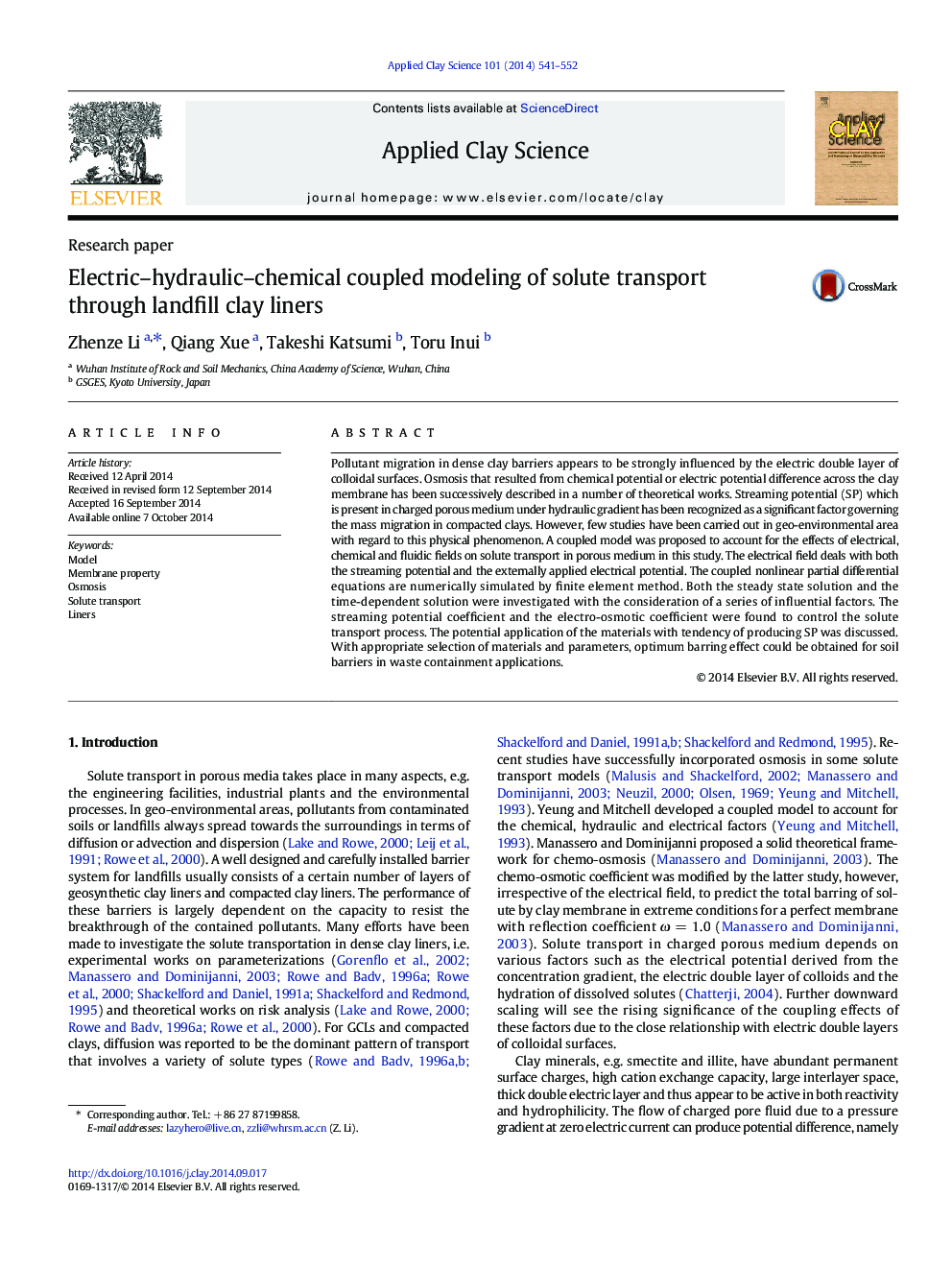| Article ID | Journal | Published Year | Pages | File Type |
|---|---|---|---|---|
| 8046980 | Applied Clay Science | 2014 | 12 Pages |
Abstract
Pollutant migration in dense clay barriers appears to be strongly influenced by the electric double layer of colloidal surfaces. Osmosis that resulted from chemical potential or electric potential difference across the clay membrane has been successively described in a number of theoretical works. Streaming potential (SP) which is present in charged porous medium under hydraulic gradient has been recognized as a significant factor governing the mass migration in compacted clays. However, few studies have been carried out in geo-environmental area with regard to this physical phenomenon. A coupled model was proposed to account for the effects of electrical, chemical and fluidic fields on solute transport in porous medium in this study. The electrical field deals with both the streaming potential and the externally applied electrical potential. The coupled nonlinear partial differential equations are numerically simulated by finite element method. Both the steady state solution and the time-dependent solution were investigated with the consideration of a series of influential factors. The streaming potential coefficient and the electro-osmotic coefficient were found to control the solute transport process. The potential application of the materials with tendency of producing SP was discussed. With appropriate selection of materials and parameters, optimum barring effect could be obtained for soil barriers in waste containment applications.
Related Topics
Physical Sciences and Engineering
Earth and Planetary Sciences
Geochemistry and Petrology
Authors
Zhenze Li, Qiang Xue, Takeshi Katsumi, Toru Inui,
